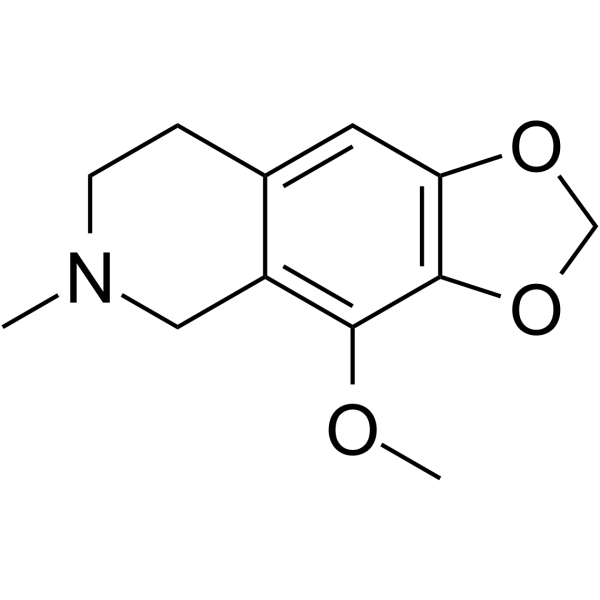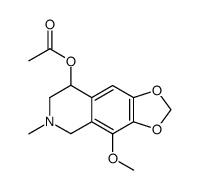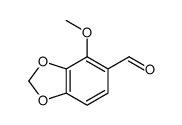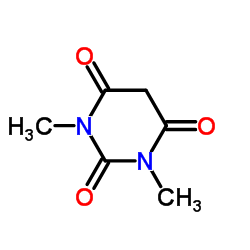hydrocotarnine
Modify Date: 2024-01-11 17:40:29

hydrocotarnine structure
|
Common Name | hydrocotarnine | ||
|---|---|---|---|---|
| CAS Number | 550-10-7 | Molecular Weight | 221.25200 | |
| Density | N/A | Boiling Point | 342.4ºC at 760 mmHg | |
| Molecular Formula | C12H15NO3 | Melting Point | N/A | |
| MSDS | N/A | Flash Point | 106.7ºC | |
Use of hydrocotarnineHydrocotarnine is a Cbl inhibitor, and results in inflammasome-mediated IL-18 secretion in colitis. Hydrocotarnine increases expression of GLUT1 and cellular glucose uptake in glycolytic metabolism. Hydrocotarnine acts as an agent that provides analgesic effect in cancer research[1][2][3]. |
| Name | 4-methoxy-6-methyl-7,8-dihydro-5H-[1,3]dioxolo[4,5-g]isoquinoline |
|---|---|
| Synonym | More Synonyms |
| Description | Hydrocotarnine is a Cbl inhibitor, and results in inflammasome-mediated IL-18 secretion in colitis. Hydrocotarnine increases expression of GLUT1 and cellular glucose uptake in glycolytic metabolism. Hydrocotarnine acts as an agent that provides analgesic effect in cancer research[1][2][3]. |
|---|---|
| Related Catalog | |
| Target |
Cbl[1][2] |
| In Vitro | Hydrocotarnine is an analgesic agent (CRIN-2), with the patent ID of WO2011160016A2[1]. Hydrocotarnine (10 μM; 1 h) elevates the secretion of IL-1β and IL-18, and (0.1-10 μM; 1 h) increases the global level of tyrosine-phosphorylated proteins in THP-1 cells[1]. Hydrocotarnine (50 μM; 0-100 min) increases the glycolytic capacity and glycolytic reserve capacity in THP-1-derived macrophages[2]. Hydrocotarnine (50 μM; 16 h) inhibits Cbl and increases the total GLUT1 protein in THP-1-derived macrophages[2]. Hydrocotarnine is known to enhance the analgesic effect of opioids, and alleviates cancer pain[3]. Western Blot Analysis[1] Cell Line: THP-1 cells Concentration: 0.1, 1, 10 μM Incubation Time: 1 hour Result: Induced p-Pyk2 loss and increased the level of tyrosine-phosphorylated proteins in a dose-dependent manner. |
| In Vivo | Hydrocotarnine (10 mg/kg/d; i.p.; 9 d) shows inhibitory effect on Cbl and results in increasing IL-18 levels, indicating that NLRP3 inflammasome activation is enhanced in mice[1]. Hydrocotarnine (10 mg/kg/d; i.p.; 9 d) protects mice from DSS-induced colitis, with low scores of pathological evaluation of inflammation, epithelial defects, and crypt atrophy[1]. Animal Model: DSS-induced colitis model in C57BL/6 mice (6-9 weeks old)[1] Dosage: 10 mg/kg Administration: Intraperitoneal injection; once daily; 9 days while 2.5% DSS treatment began on day 1 and ended on day 7 Result: Significantly attenuated the weight loss of DSS-induced colitis mice compared to PBS-treated control mice, indicating that decreasing negative regulation of the NLRP3 inflammasome activation could attenuate colitis in an animal model. |
| References |
| Boiling Point | 342.4ºC at 760 mmHg |
|---|---|
| Molecular Formula | C12H15NO3 |
| Molecular Weight | 221.25200 |
| Flash Point | 106.7ºC |
| Exact Mass | 221.10500 |
| PSA | 30.93000 |
| LogP | 1.34970 |
CHEMICAL IDENTIFICATION
HEALTH HAZARD DATAACUTE TOXICITY DATA
|
| Precursor 9 | |
|---|---|
| DownStream 5 | |
| 8-methoxy-2-methyl-6,7-methylenedioxy-1,2,3,4-tetrahydroisoquinoline |
| Hydrocotarnine |
 CAS#:108261-07-0
CAS#:108261-07-0 CAS#:108434-79-3
CAS#:108434-79-3![5,6,7,8-Tetrahydro-8-ethoxy-4-methoxy-6-methyl-1,3-dioxolo[4,5-g]isoquinoline Structure](https://image.chemsrc.com/caspic/168/108434-81-7.png) CAS#:108434-81-7
CAS#:108434-81-7 CAS#:108261-03-6
CAS#:108261-03-6 CAS#:5779-99-7
CAS#:5779-99-7![[N-[2-Methoxy-3,4-(methylenedioxy)benzyl]amino]acetaldehyde diethyl acetal Structure](https://image.chemsrc.com/caspic/295/108261-00-3.png) CAS#:108261-00-3
CAS#:108261-00-3![[N-[2-Methoxy-3,4-(methylenedioxy)benzyl]-N-methylamino]acetaldehyde diethyl acetal Structure](https://image.chemsrc.com/caspic/257/108261-01-4.png) CAS#:108261-01-4
CAS#:108261-01-4 CAS#:82-54-2
CAS#:82-54-2 CAS#:769-42-6
CAS#:769-42-6![4-methoxy-6-methyl-7,8-dihydro-[1,3]dioxolo[4,5-g]isoquinolin-6-ium,iodide structure](https://image.chemsrc.com/caspic/249/30936-27-7.png) CAS#:30936-27-7
CAS#:30936-27-7 CAS#:569-31-3
CAS#:569-31-3 CAS#:14097-39-3
CAS#:14097-39-3 CAS#:88493-58-7
CAS#:88493-58-7![1,3-Dioxolo[4,5-g]isoquinoline, 5,6,7, 8-tetrahydro-6-methyl- structure](https://image.chemsrc.com/caspic/068/494-55-3.png) CAS#:494-55-3
CAS#:494-55-3